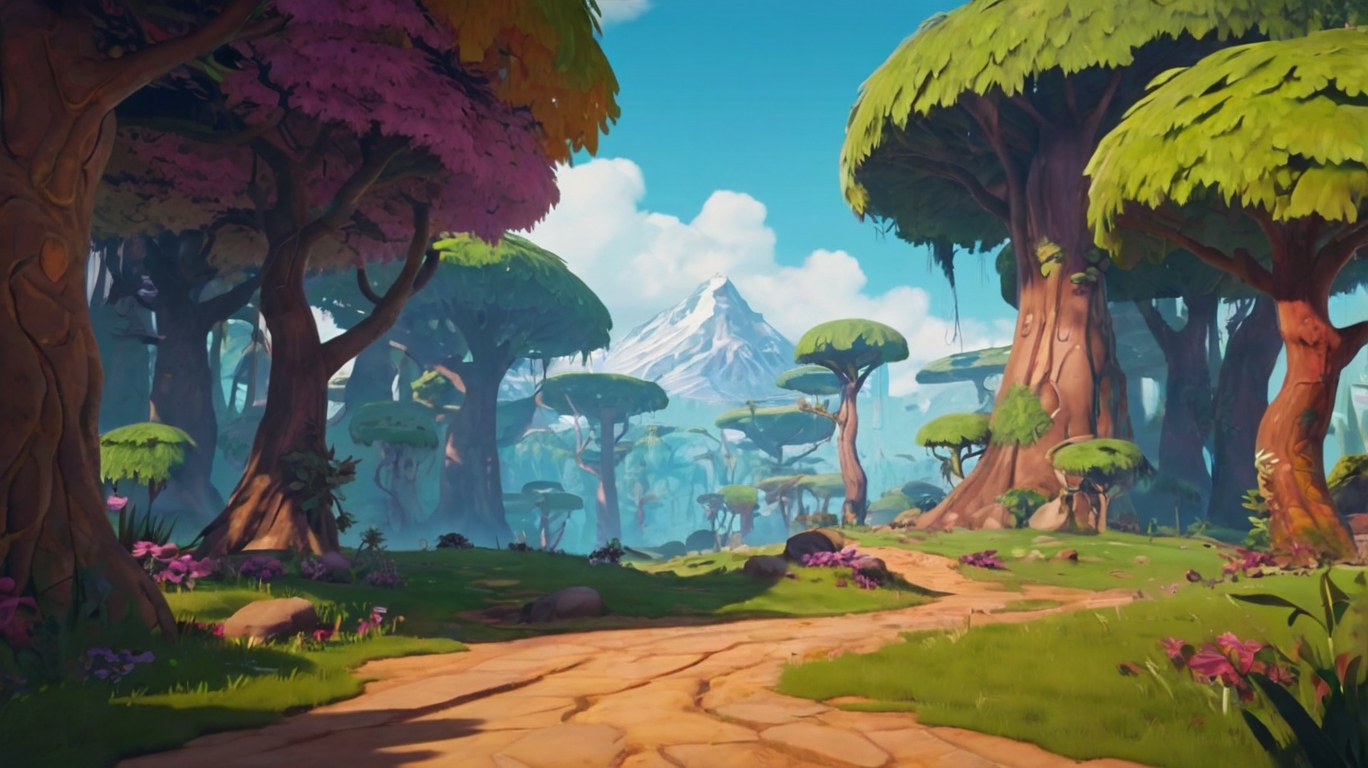
Stylized game art is a creative method that prioritizes artistic expression over photorealism. Stylized art aims to emphasize shapes, colors, and proportions to create a distinct visual identity. This art style is frequently employed in various games, from independent ventures to big brands, and provides endless potential for creative development.
Definition of Stylized Art
Stylized art refers to visual styles in games that purposefully depart from a realistic representation. This disparity may be indicated by a range of techniques, including exaggerated characters, vivid color schemes, and surreal locations. Unlike realistic art, which aims to replicate the real world as accurately as possible, stylized art enables artists to construct a visual language that can represent specific moods, topics, or cultural influences.
Graphic novels, cartoons, and traditional animation are just a few of the many sources of inspiration for stylized art. The intention is not to recreate reality, but rather to create a world that is special, unique, and often more accessible or appealing to a wider audience.
Stylized vs. Realistic Art
The main difference between realistic and stylized art is the method used to depict visual information. To accurately depict every element and detail of the real world, realistic art strives for realism. This technique often uses realistic lighting, complex texturing and accurate anatomy. Realistic art approaches in video games are designed to transport players into an authentic and compelling reality.
On the other side, stylized art emphasizes expression and uniqueness while playing around with reality. It allows for greater creative freedom, often producing unique and unforgettable photographs. While realistic painting can accomplish amazing things technically, stylized painting usually draws the eye and is distinguished by its originality.
Stylized Art Specifics
A thorough grasp of basic artistic concepts and the capacity to creatively defy them are prerequisites for producing styled work. The following particular features define stylized art:
Lighting
Stylized art frequently uses lighting that is more dramatic and less constrained by reality. Artists utilize lighting as a technique to create contrast, establish mood, and draw attention to specific elements. For example, bright, saturated lighting may be used in a comical setting, whereas sharp shadows and stark contrasts may highlight a darker, more mysterious scenario.
Textures
The use of bold, distinct patterns that complement the overall look of the game is frequently substituted for tiny details in textures found in stylized games. Artists can immediately infuse personality and emotion into the surfaces of games by using hand-painted textures, which are favored for their startling details and straightforward shading.
Proportions
Stylized art plays with proportions to enhance character personality and visual storytelling. Characters might have enlarged heads or tiny feet, creating a whimsical or exaggerated look that makes them stand out. This intentional distortion of reality allows artists to emphasize specific traits—like strength, cuteness, or menace—quickly conveying a character’s role or personality without needing words.
Animations
Animation in stylized games often embraces exaggeration and fluidity. Movements can be more dynamic and expressive, breaking away from the constraints of realistic motion. Whether it’s a character’s overly dramatic jump or a playful, bouncy walk, the animation style can enhance the game’s overall feel and make characters more memorable and engaging.
Camera Effects
Stylized games often use creative camera effects to heighten immersion. For example, they may employ unusual depth-of-field effects to make foreground elements pop or use color grading to create a specific mood, like a warm, nostalgic feel or a cold, eerie atmosphere. These effects aren’t just about realism but about guiding the player’s emotional experience.
Stylized Character Design Tips and Tricks:
- When designing stylized characters, consider the following:
- Silhouette: Ensure the character has a strong, recognizable silhouette that makes them instantly identifiable.
- Color Palette: Use a limited but bold color palette to create a cohesive and striking appearance.
- Exaggeration: Don’t be afraid to exaggerate features that convey personality or emotion, such as oversized eyes for a more expressive face.
- Consistency: Maintain consistency in design elements to create a harmonious visual style throughout the game.
Examples of Popular Games with Stylized Art
Several popular games are known for their distinctive stylized art:
- “The Legend of Zelda: Breath of the Wild”:
- This game combines hand-painted textures with a vibrant color palette, creating a world that feels both expansive and intimate. The stylized art allows for a timeless aesthetic that contributes to the game’s sense of adventure and discovery.
- “Cuphead”:
- Inspired by 1930s cartoons, “Cuphead” uses hand-drawn animation and vintage aesthetics to create a unique and visually captivating experience. The exaggerated animations and character designs are a perfect example of how stylized art can define a game’s identity.
- “Fortnite”:
- “Fortnite” uses a bold, colorful art style that appeals to a wide audience. The exaggerated proportions of characters, combined with playful animations and vibrant environments, make the game instantly recognizable and highly engaging.
- “Journey”:
- “Journey” employs a minimalistic yet powerful stylized art style that enhances the game’s emotional impact. The use of lighting, color, and simple shapes creates a serene and evocative atmosphere, making the experience deeply memorable.
Conclusion
Stylized game art offers endless opportunities for creativity and expression. By focusing on artistic elements like lighting, textures, proportions, and animations, artists can create worlds that are not only visually appealing but also emotionally resonant. Whether through exaggerated character designs, bold color choices, or unique camera effects, stylized art helps define a game’s identity and leaves a lasting impression on players. As seen in popular games, stylized art has the power to elevate a game from merely entertaining to truly iconic.
At Melior Games, our art team is skilled in bringing any visual style to life. Whether you’re looking for a highly stylized, whimsical world or something more grounded and realistic, we can help you create art that perfectly fits your game’s vision. Let us assist in making your game visually unforgettable.




